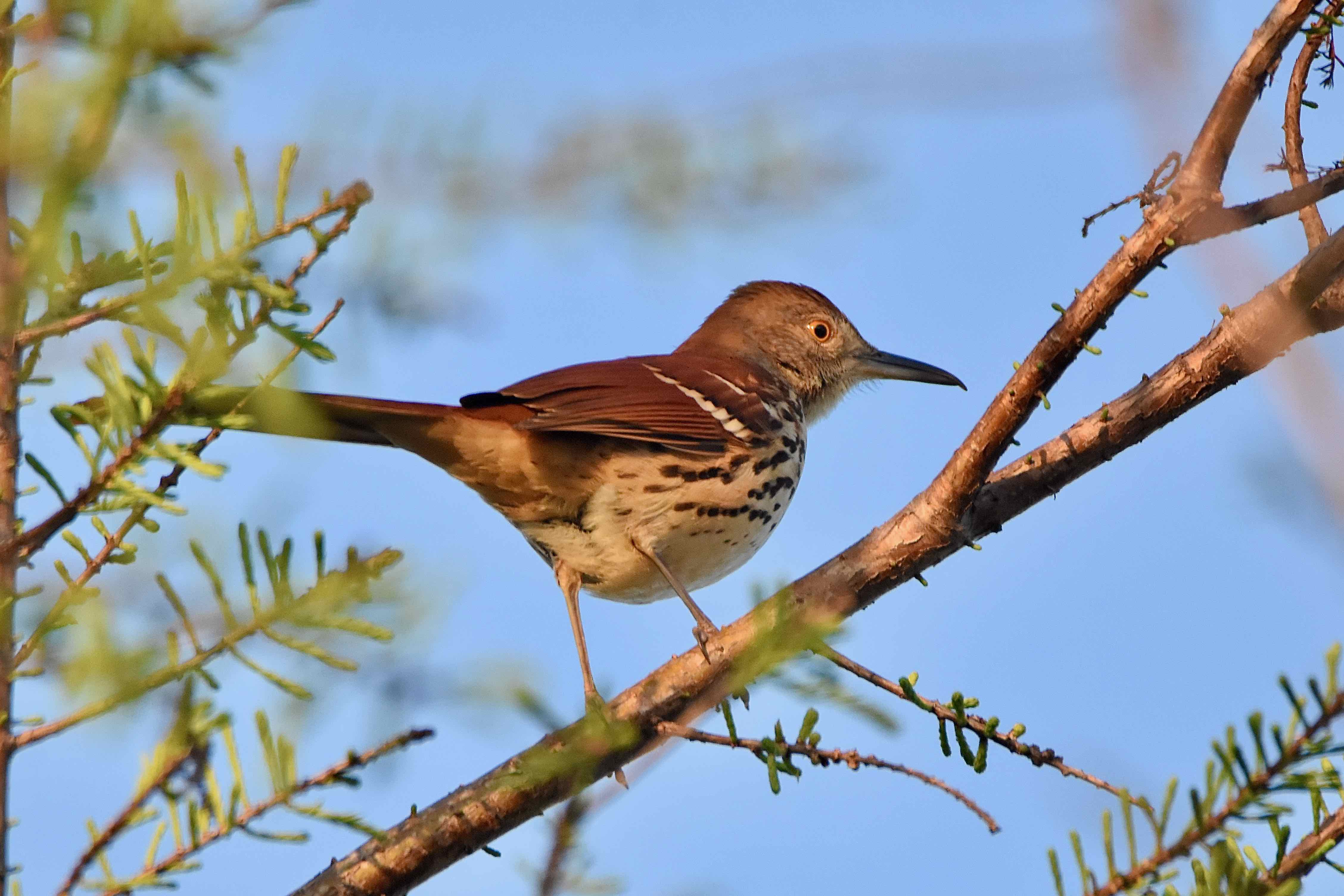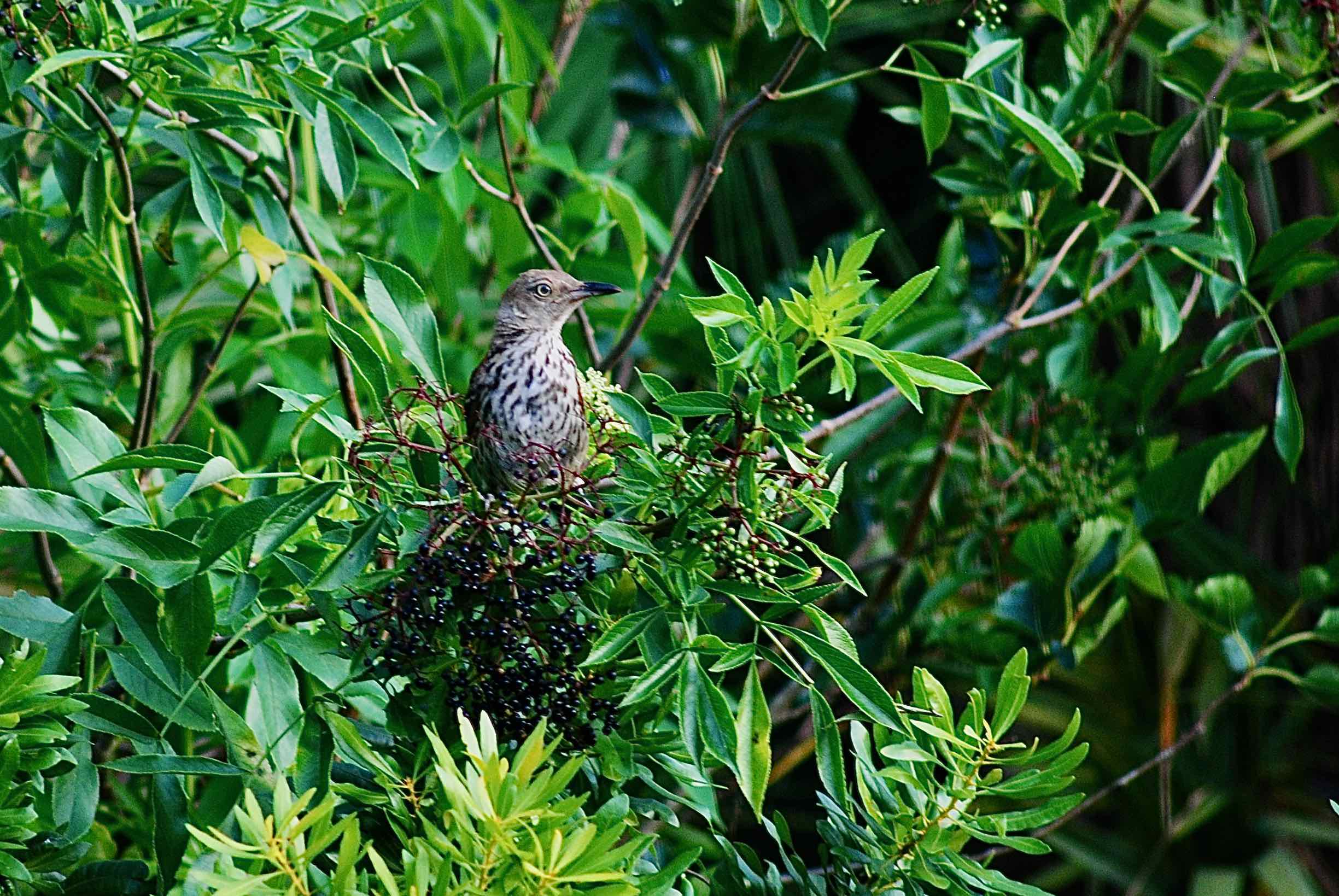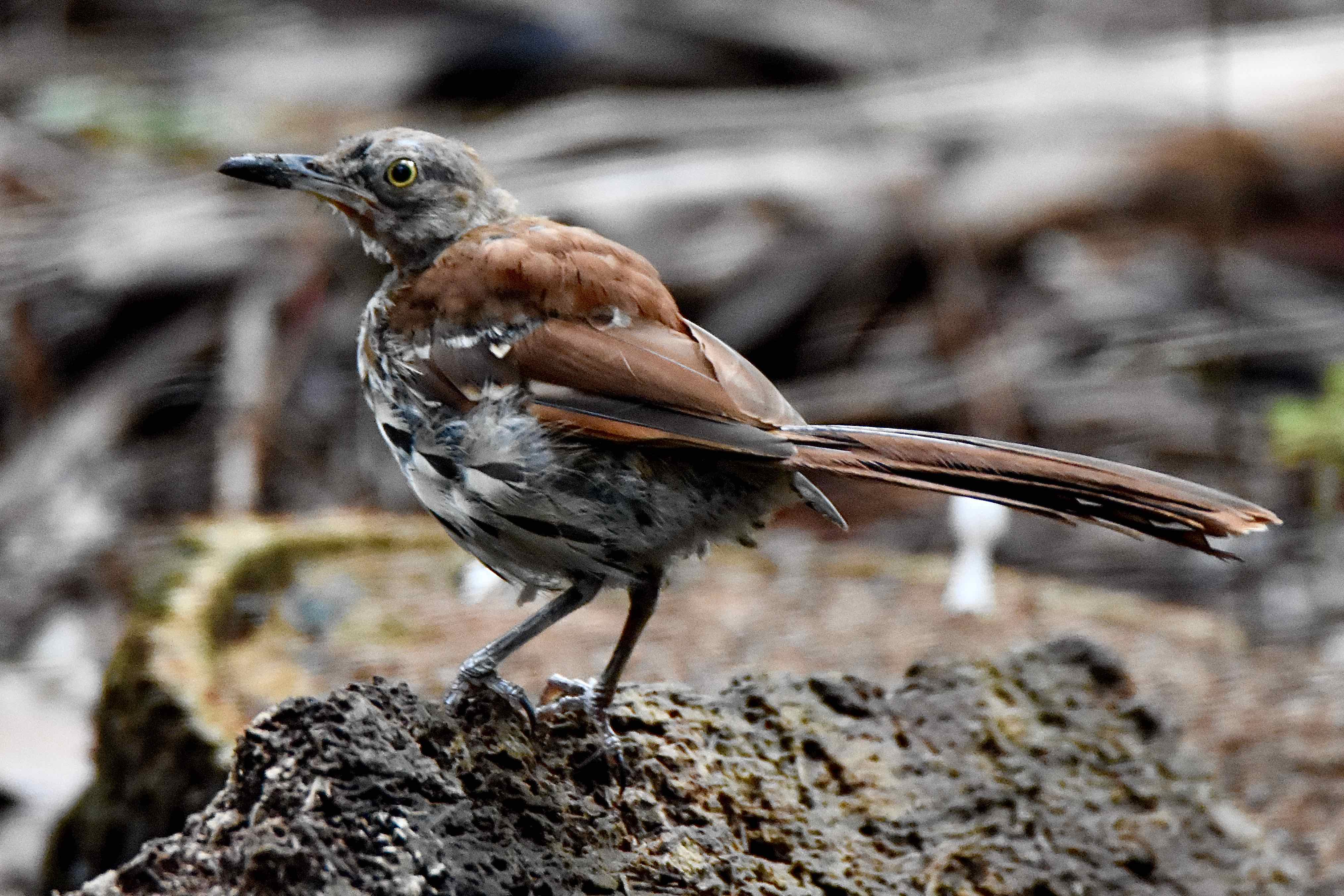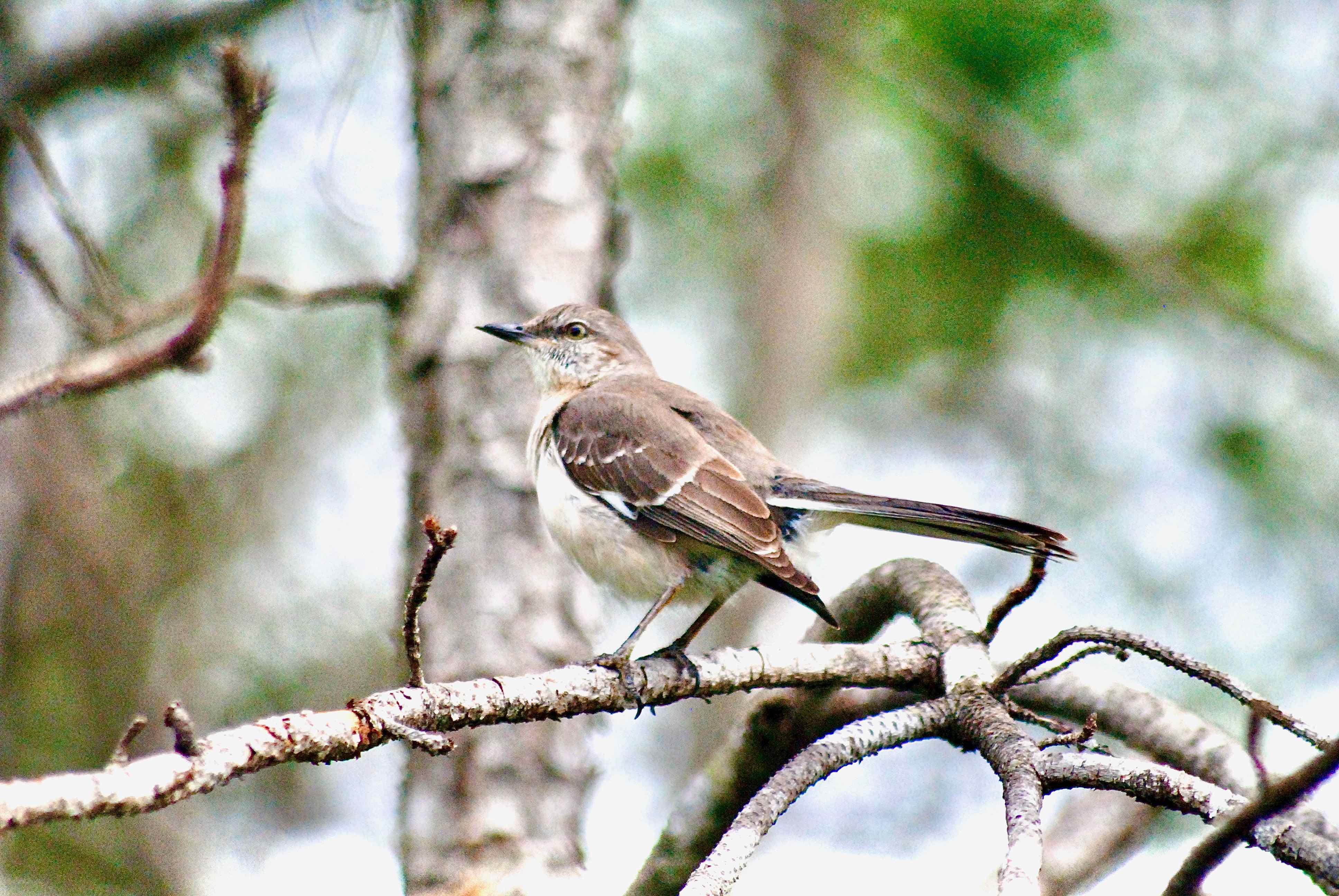
Brown thrasher, photographed at Plantation Preserve Linear Trail, Plantation, Broward County, in February 2018.
The brown thrasher, Toxostoma rufum, isn't the easiest bird to spot. It's common enough, but it tends to hang out in dense thickets and brush where it's difficult to see anything, let alone a bird that doesn't want to be seen.
Brown thrashers are year-round residents of Florida but their numbers get a boost each fall by migrants from the north. They are confirmed breeders in just about every part of state, even occasionally in the Keys. However, they are more abundant in the Panhandle and the central Peninsula than they are south of Lake Okeechobee. According to the Florida Fish and Wildlife Conservation Commission, about the only places they avoid are the central Everglades and mainland Monroe County.
They're also found most everywhere in the United States and southern Canada east of the Rockies. In the northern part of their range, they are migrants; in the southern, along the Atlantic and Gulf coastal plains, they are permanent residents. Even in the far north, some thrashers will eschew the flight south if there is sufficient food around. Thrashers don't have a reputation for long-distance flying, but they have been spotted as far away as the British Isles and even Germany. Some thrashers regularly winter in the Caribbean.
Brown thrashers are the state bird of Georgia and were the inspiration for the nickname of Atlanta's long-departed National Hockey League team, the Atlanta Thrashers. The bird was more popular than the hockey team, which is now the Winnipeg Jets. Brown thrashers have a long bill that has a slight downward curve, and yellow eyes. Their tail is long and often upwardly cocked, like their northern mockingbird cousins. They are fairly large as as song birds go, with a body that can be a foot long and a wingspan that approaches 13 inches. They are reddish-brown birds, with two white wing bars; their underside is white with dark brown stripes. Males and females are similar.
Brown thrashers have a huge reportoire of songs — as many as 1,100, according to the Cornell Laboratory of Ornithology — many of which are borrowed from other birds. Thrashers will repeat each phrase twice. They can be exuberant singers, but during the winter, they can become rather quiet, singing — and answering the songs of other thrashers — only at dawn and dusk.
A good meal for a brown thrasher could be a large bug like a grasshopper, a frog, lizard or small snake. They also eat acorns and berries. Fruit and nuts become particularly important parts of their diet in the fall and winter. They forage on the ground, picking leaves and other litter with their bill and tossing it aside — thrashing, if you will — then digging around for a tasty bug or worm.
You'll find brown thrashers along forest edges, in dense thickets and old, untended pastures. They are territorial, with males defending their turf by loudly singing. However, a male will win the heart of the lady thrasher by singing softly and presenting her with nesting material.
They nest in trees or shrubs near the ground, even directly on the ground. The home is a large and bulky collection of sticks, bark and grass, lined with finer material. Both sexes share construction duty. Thrashers will fiercely defend their nests, attacking anyone perceived as a threat, even drawing blood. In Florida, females typically lay clutches of three eggs, which will require two weeks or less of incubation, a chore that both parents split.
Both parents also share the job of feeding their offspring, which remain nestbound for nine days to two weeks. Scientists believe the quick fledging is an adaption required by the large number of predators that also like the shrubby habitats where thrashers nest. Brown thrashers will have two broods, sometimes three, in a season, building a new nest each time. Their nests are also the target of brown-headed cowbirds, the notoriously bad parents of the avian world, who deposit their eggs in the nests of others rather than rear their own offspring.
Because of their vast numbers and large range, brown thrashers rate a "least concern" from the International Union for Conservation of Nature. IUCN notes that the thrasher population has been declining for some years but not so sharply as to cause alarm. Humans have had a mixed effect on the population, helping to increase the bird's range by suppressing fire, clearing forests and putting out feeders. On the other hand, the shrubby habitat they prefer is disappearing, in some cases being replaced by forests. Cornell notes that they can be unintentional victims of pesticides.
Brown thrashers are members of Mimidae, the family of mockingbirds, cat birds and thrashers.
Plantation Preserve Linear Trail



